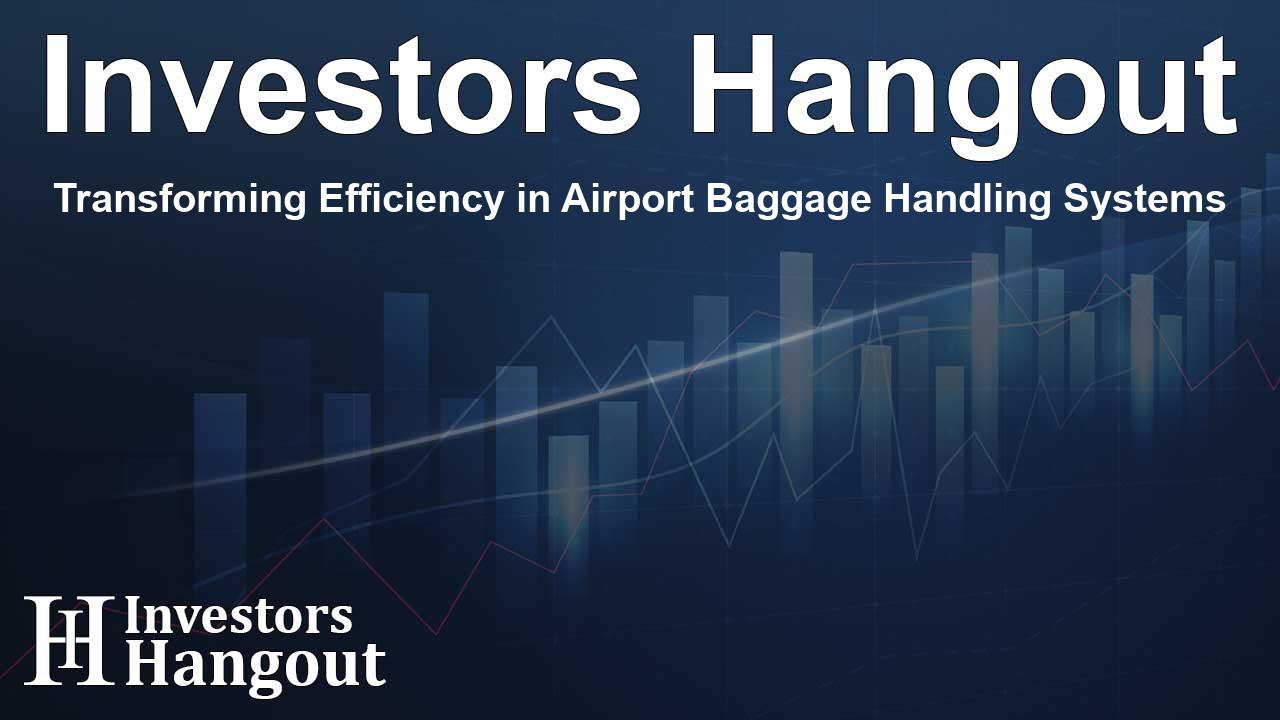Transforming Efficiency in Airport Baggage Handling Systems

Expanding Horizons: The Airport Baggage Handling System Market
In recent years, the Airport Baggage Handling System market has witnessed remarkable growth, expanding from USD 9.2 billion in 2023 to an anticipated USD 13.2 billion by 2033. This growth is propelled by a Compound Annual Growth Rate (CAGR) of 3.68%, reflecting the increasing need for efficient baggage handling as more travelers take to the skies.
Driving Factors Behind Market Expansion
The surge in air travel is the primary catalyst behind this market's expansion. As airports worldwide become busier, the demand for advanced baggage handling systems has surged. These automated systems ensure that passenger luggage is efficiently transported, tracked, and sorted from check-in to boarding. Innovations in technology, including RFID, IoT, and AI, are enhancing operational speed, accuracy, and security in baggage handling.
Technological Innovations in Baggage Handling
Today’s airports are integrating cutting-edge technology to streamline their operations. The introduction of automated sorting and tracking systems not only expedites the handling process but also significantly reduces errors traditionally seen in manual processes. Advanced conveyor systems are particularly crucial, offering flexibility and speed while minimizing labor costs and boosting security measures.
Market Challenges and Opportunities
While the market is on the rise, it does face challenges such as high installation and maintenance costs. Nonetheless, leading companies in this sector are focused on developing scalable solutions to meet the needs of both large and small airports. This innovation is crucial for ensuring smooth baggage handling, ultimately enhancing the passenger experience.
Segment Insights: Types and Operations
When analyzing market segments, the conveyor systems have taken the lead, catering to the rising demands as airports expand and modernize. These innovative systems facilitate increased throughput and operational efficiency, which are essential during peak travel periods.
Automated vs. Manual Handling
Automated baggage handling systems have proven to be more effective than manual systems. By employing automated technologies such as robotic units and conveyor belts, airports can improve luggage handling speed and reliability. With a strong focus on passenger experience, many airports are investing heavily in automated solutions to reduce delays and increase efficiency.
Regional Insights and Market Dynamics
North America is expected to maintain its dominance in the Airport Baggage Handling System market over the coming years. This region is at the forefront of implementing advanced technologies like AI-driven analytics and RFID tracking, which not only enhance operational efficiency but also improve passenger satisfaction significantly.
Emerging Markets in Asia Pacific
Asia Pacific is emerging as the fastest-growing region in terms of market expansion. Countries like China and India, with their booming tourism sectors and emerging infrastructures, are driving the adoption of innovative baggage handling solutions. Although they face challenges such as varying infrastructure capabilities and initial technology costs, the potential for growth in this region is substantial due to the increasing passenger traffic and demand for efficiency.
Competitive Landscape Analysis
The competitive landscape of this market is characterized by the presence of key players such as Beumer Group, Daifuku Co. Ltd., and Siemens AG, among others. Major manufacturers are continuously innovating and developing strategic partnerships to enhance their offerings. This proactive approach not only allows companies to keep pace with technological advancements but also fosters competitive advantages in the evolving market.
Recent Market Developments
A notable development was in December 2022 when Siemens Logistics, in collaboration with a local consortium, secured a project for the Kuala Lumpur airport terminal extension aimed at overhauling the baggage handling system. Such initiatives underline the commitment to upgrading infrastructure in major airports.
Frequently Asked Questions
What is the projected growth of the airport baggage handling system market?
The market is expected to grow from USD 9.2 billion in 2023 to USD 13.2 billion by 2033.
What drives innovation in baggage handling systems?
Advancements in technology such as RFID, IoT, and AI are key drivers, improving efficiency and passenger experience.
Which regions are leading in market growth?
North America currently leads, while Asia Pacific is noted for the fastest growth due to emerging markets like China and India.
What are the main challenges facing the market?
Challenges include high installation and maintenance costs as well as varying infrastructure capabilities across regions.
Who are the key players in the market?
Major players include Beumer Group, Daifuku Co. Ltd., Fives Group, and Siemens AG, all striving to innovate and enhance their market presence.
About Investors Hangout
Investors Hangout is a leading online stock forum for financial discussion and learning, offering a wide range of free tools and resources. It draws in traders of all levels, who exchange market knowledge, investigate trading tactics, and keep an eye on industry developments in real time. Featuring financial articles, stock message boards, quotes, charts, company profiles, and live news updates. Through cooperative learning and a wealth of informational resources, it helps users from novices creating their first portfolios to experts honing their techniques. Join Investors Hangout today: https://investorshangout.com/
Disclaimer: The content of this article is solely for general informational purposes only; it does not represent legal, financial, or investment advice. Investors Hangout does not offer financial advice; the author is not a licensed financial advisor. Consult a qualified advisor before making any financial or investment decisions based on this article. The author's interpretation of publicly available data shapes the opinions presented here; as a result, they should not be taken as advice to purchase, sell, or hold any securities mentioned or any other investments. The author does not guarantee the accuracy, completeness, or timeliness of any material, providing it "as is." Information and market conditions may change; past performance is not indicative of future outcomes. If any of the material offered here is inaccurate, please contact us for corrections.